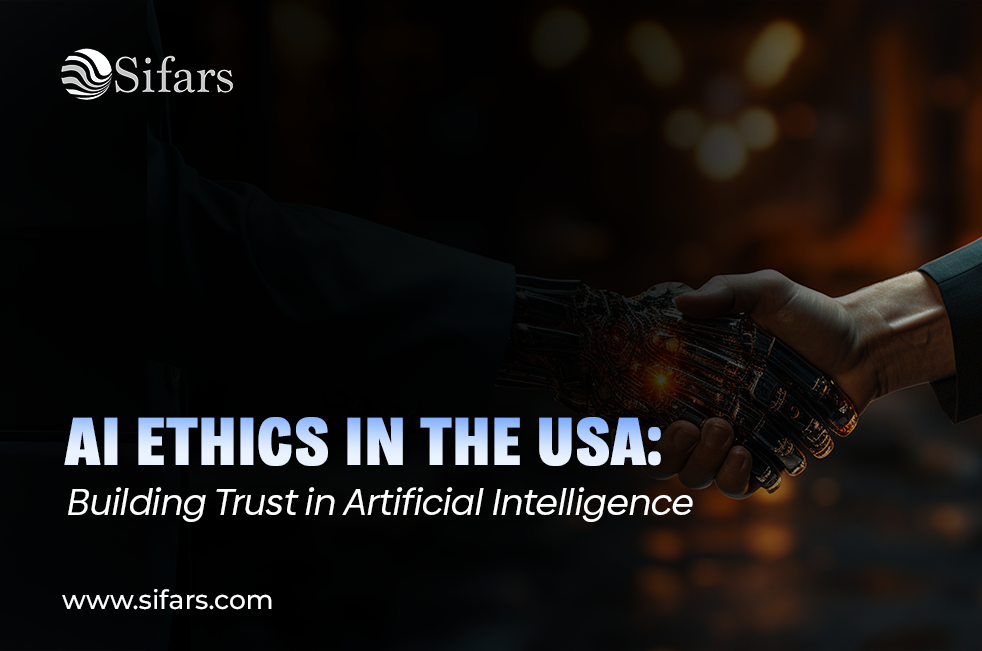Introduction
Artificial Intelligence (AI) is rapidly transforming industries, providing unprecedented opportunities for innovation and efficiency. However, as AI systems have become more integrated into decision-making processes, ethical implications and reliability concerns have come to the forefront. Building trust in AI systems is not just a technical challenge but a multidimensional effort involving ethical considerations, transparency, accountability, and human oversight.
This blog will explore key principles for promoting trust in AI systems. We will discuss the importance of transparency, the need for human oversight, the role of accountability, and bias mitigation strategies. By understanding and applying these principles, organizations can ensure that their AI systems are effective and consistent with human values and societal expectations.
Why is trust a barrier to real AI adoption?
Despite advances in AI technology, a significant barrier to its widespread adoption is a lack of trust. The Deloitte report shows that less than 10% of organizations have adequate frameworks in place to manage AI risks, highlighting a significant governance gap. This gap underscores the need for robust mechanisms to ensure that AI systems operate transparently, ethically, and reliably.
Trust in AI is important because these systems often make decisions that can have significant impacts on individuals and society. Users may be reluctant to trust AI without trust, hindering its potential benefits. Therefore, building trust is not just about preventing negative outcomes, but also about enabling the positive transformative power of AI.
Five Principles of Trustworthy AI
1. Transparency
Transparency involves making AI systems understandable to stakeholders. This includes clear documentation of how the algorithms work, the data they use, and the decision-making processes. Transparent AI systems allow users to understand how results are achieved, which is essential for trust.
For example, Google’s AI principles emphasize the importance of transparency and explainability in AI development. By providing insight into AI operations, organizations can unlock the secrets of these systems, making them more accessible and trustworthy.
2. Human inspection
Human oversight ensures that AI systems are monitored and guided by human judgment. This theory acknowledges that while AI can efficiently process large amounts of data, human intuition and ethical considerations are irreplaceable.
The National Institute of Standards and Technology (NIST) highlights the role of human oversight in its AI risk management framework, advocating mechanisms that allow humans to understand and, if necessary, override AI decisions. Such oversight is important to prevent unintended consequences and ensure that AI aligns with human values.
3. Accountability
Accountability in AI involves establishing clear responsibilities for the results produced by AI systems. Organizations must define who is responsible for AI actions, especially in cases where decisions have a significant impact.
The OECD’s AI Principles emphasize the need for accountability, recommending that AI actors should be held responsible for the outcomes of their systems. Implementing accountability measures ensures that there is recourse when AI systems cause harm, thereby strengthening trust.
4. Bias Mitigation
Bias in AI doesn’t always come from malicious intent; Often, they stem from inherited patterns in historical data. However, unconscious bias can also have serious consequences, from excluding certain customer groups to reinforcing systemic inequality.
Bias mitigation starts with representative data sourcing and extends to rigorous testing, fairness metrics, and post-deployment monitoring. This is not a one-time checkbox but an ongoing responsibility. Researcher Joy Buolamwini’s work through the Algorithmic Justice League exposed how commercial facial recognition systems were 34% less accurate for darker-skinned women than lighter-skinned men, prompting reforms at major tech companies.
For enterprise AI systems, especially in HR, supply chain, or customer support, bias mitigation directly impacts user trust and brand reputation. Transparent mitigation strategies signal to stakeholders that fairness is not optional, it is built into the system from day one.
5. Security and Flexibility
AI systems must not only be intelligent, but they must also be secure and resilient against misuse, manipulation or failure. As AI becomes increasingly embedded in business-critical workflows, the attack surface is expanding. From adversarial signals to data poisoning and model drift, new vulnerabilities are emerging that require proactive defenses.
Security in AI includes securing data pipelines, enforcing access controls, securing model architectures, and continuously monitoring performance. Flexibility goes hand in hand with security; It is the ability of a system to function under stress, recover from disruptions, and adapt to changing inputs or environments.
According to McKinsey’s report on the state of AI, organizations are increasingly prioritizing risk mitigation, with cybersecurity, inaccuracy, and IP breach emerging as top concerns due to their already experienced tangible negative consequences. This shift reflects growing acceptance that trust in AI systems requires not only performance, but also predictability, robustness, and safeguards by design.
In agentic AI environments, where AI agents take autonomous actions, security must be fundamental, not reactive. Without proper security measures, even well-designed systems can become brittle, compromised, or opaque. Building trustworthy AI means ensuring that systems are not only intelligent but also resilient under pressure and secure by default.
Conclusion and key points
Building trust in AI is not optional; This is a prerequisite for sustainable adoption. Transparency, human oversight, accountability, bias mitigation, and security form the foundation of responsible AI. These are not abstract ideals; They are the operational commitments that determine how AI is built, deployed, and expanded.
Organizations that incorporate these principles into their AI strategy will not only reduce risk but they will also accelerate business value, drive adoption across teams, and quickly establish themselves as leaders in an AI-driven economy.
As AI systems become more autonomous and integrated into critical workflows, ethical design is not a side conversation, it is core infrastructure.
The future of AI belongs to those who build it from the beginning with purpose, with people, and with accountability.
Connect with Sifars today to schedule a consultation and begin accelerating your business’s transition into the future of intelligent operations.

Leave a Reply